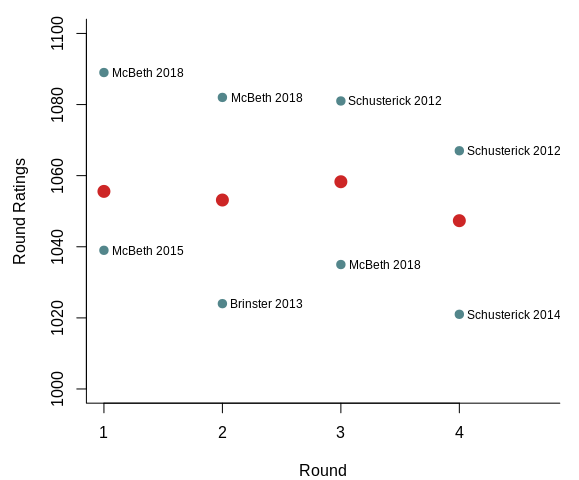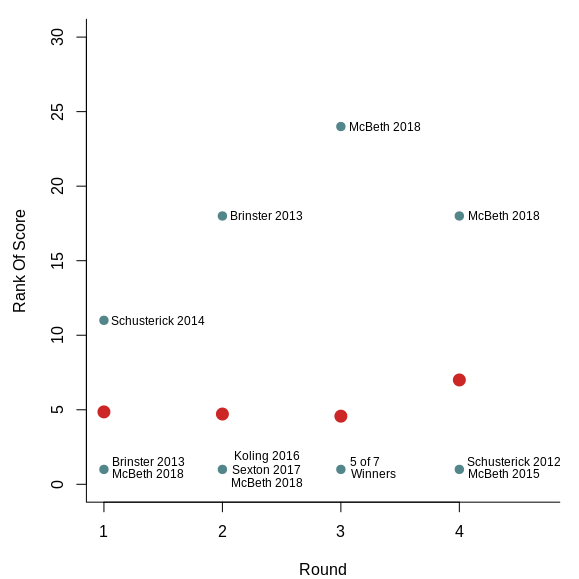Originally published at: https://discgolf.ultiworld.com/2019/10/02/moving-day-usdgc-key-round/
The final major of the 2019 season is upon us, and with it comes many questions: can Paul McBeth repeat and sweep the 2019 majors? Can Eagle McMahon get a huge win after an up-and-down year? Could we see another first time major winner, like we did with Jeremy Koling and Nate Sexton in 2016 and 2017?
But the question I want to answer here is more universal: what does a win at the USDGC look like? They say you have to look back in order to move forward. So that’s what I’m going to do here. Using USDGC data as far back as 2012, I am going to do a quick breakdown of the anatomy of a USDGC win.
In order to do this, I looked at the ranking of round scores and round ratings for the past seven winners. Obviously, the winners all ended up with the lowest total scores at the end of the event, but looking at individual round statistics will show us how the champions got there. And, of course, to better distinguish any meaningful patterns, I plotted the means of these values, along with the best (maximum) and worst (minimum) values the winners had to offer.
 Round Ratings by Round. Red dots are mean values and blue dots are maximum and minimum values.
Score rankings by round. Red dots are mean values and blue dots are maximum and minimum values.
Round Ratings by Round. Red dots are mean values and blue dots are maximum and minimum values.
Score rankings by round. Red dots are mean values and blue dots are maximum and minimum values.
A few things stand out in the plots. First, the winner does not need (nor ever does) dominate all rounds of the event. Five out of seven winners had at least one round score that ranked outside of the top five. Four rounds is a lot of golf, and there is a some room for error.
Second, there are multiple ways to win the event. You can take the Paul McBeth 2018 route, where you start out incredibly hot, with back-to-back 1080 rated rounds, then cruise to the finish line with round scores that rank only 24th and 18th in the field. (To his credit, McBeth was dealing with a pretty serious illness during the last two rounds.)
Or you can use the Will Schusterick 2012 method, where you start out slowly, with a relatively low 1040 rated round, then make a sprint to the finish line with 1081 and 1067 rated rounds, both of which were best in the field.
Schusterick’s win in 2012 (and more specifically his 1081 rated third round) could be lumped together with the most common method of victory – pretty strong golf golf for most of the rounds before taking control of the event with a dominant third round.
The highest average round rating out of the four was the third round at 1058.3, and five of the seven winners had the best score in that round.1 The importance of the third round is further highlighted by the fact that the fourth round had the lowest average round rating and was over 10 points lower than the third round! In other words, winners have it mostly locked up after Friday.
I think this is the biggest takeaway from these numbers because it means that moving day has historically been a real thing at USDGC! Therefore, as we dive into this year’s tournament. you should be sure keep an eye out for someone having a big round on Friday (moving day!) and not wait until Saturday to tune in, or you might miss out on the best golf of the week!
My excitement here is a bit tempered, though, because the mean round rating of the third round is not statistically different from that of the other rounds (Welsh two sample t-test: t11.35 = 0.73, P = 0.47). ↩


